Although we consider ourselves fairly private people, we still blog publicly about our travel adventures. There are several reasons why we choose to do so. Most of them are selfish. We want to have a journal of all we’ve done and seen to look back at when our memories have lost their sharpness, I like the discipline of distilling down our experiences into 1,500-2,000 word essays on a regular basis, and the blog is a much more efficient way to update friends and family on our activities than sending endless annoying mass emails or texts. But another major reason for blogging is to pay forward the debt we owe to so many other travel bloggers. Their summaries of their experiences — good and bad — have been invaluable in judging how long to spend in various destinations, what to do in the area, and where to stay. If we can provide similar information for other travelers, we will help rebuild our karma balance.
Thanks to the advance information from RV bloggers we follow (conveniently collected under “Blogs We Follow” above), we came into San Antonio knowing that there was a very short list of things we really wanted to see. At the top of the list: the San Antonio Missions National Historical Park.
Spanish Missions
The park consists of four separate missions established in the early 18th century on the edge of the Spanish empire, strung like beads along a six-mile stretch of the San Antonio River. From north to south the missions are commonly known as Concepcion (Nuestra Senora de la Purisma Concepcion), San Jose (San Jose y San Miguel de Aguayo), San Juan (San Juan Capistrano), and Espada (San Francisco de la Espada). The day of our visits was warm but foggy. We watched the park video at the visitor center at San Jose, then participated in an excellent ranger-led tour of San Jose. Our ranger was a South Texas native with a master’s degree in anthropology, and she did an outstanding job communicating the human history of the missions from the point of view of both the native peoples and the Spanish missionaries.
In the early 18th century, the native inhabitants of South Texas were small, nomadic bands of hunter-gatherers experiencing severe pressures. In the 200 years since the first Spanish settlements in North America the Apaches and Comanches had become masters of horsemanship and were ranging south from the Great Plains, competing for scarce game. Meanwhile, the historical trade routes with the peoples of present-day northern Mexico brought a never-ending supply of deadly new European diseases. The area was on the northern frontier of the Spanish empire, and Spain was very interested in extending its sphere of influence and control to stave off competition from the French (who had established New Orleans east of present-day Texas) and British (whose American colonies had been growing steadily for 100 years).
Confronted with a weakened local population in territory that Spain wanted to control, there are a lot of ways the Spanish could have played things. What they chose to do was establish farming communes, teach the hunter-gatherers how to grow crops with man-made irrigation canals, introduce livestock (sheep, cows, pigs, chickens) and establish the first cattle ranches in Texas, teach trades like carpentry, brick-making, metalworking, weaving, and leather working, and instruct the locals how to read and write, all under the supervision of religious leaders who also communicated the Christian gospel. The goal of the missions was to create flourishing towns full of tax-paying Spanish citizens and good Catholics, and the missions were designed to be secularized — turned over from the church to the local residents — once they were self-sufficient. The mission system was far from perfect, but the Spanish solution was pragmatic and shockingly compassionate.
Since the missions are located so close together we elected to visit all four. The four missions follow the same basic blueprint of a large walled courtyard with a church and religious quarters on one end and apartments and workshops for mission residents along the interior perimeter. Yet each has a different look and feel. The mission communities specialized in different work, for example with San Juan focused on growing crops and ranching while Espada made bricks. Differing prosperity is evident in the size of the enclosed communities and especially the size and complexity of churches. The structures have also held up differently over the last three hundred years; the church at Concepcion is the most intact but the mission grounds have been turned into ugly housing developments that butt up against the church. It was worth visiting all four to experience different dimensions of the missions.
There is a fifth mission (Mission San Antonio de Valero) which is located downtown and gave the entire city its name. After the mission was secularized, the sturdy limestone sanctuary was repurposed as a fortress that became central to a famous battle and is now known as The Alamo. We had absolutely no interest in visiting that tourist trap, so we had only four mission stops on our agenda.
Riverwalk
The other San Antonio landmark that we wanted to check out is the River Walk, the pedestrian walkway flanking the San Antonio River. In the downtown area, the river is a narrow, murky channel contained in concrete and fronted by bars, restaurants, hotels, and cheesy “attractions” like the Guinness World Records Museum. No, thank you. While we love the idea of integrating the waterfront into the city, as in Austin, we prefer our rivers to look like naturally occurring bodies of water. Happily, there are two extensions of the River Walk out of the congested downtown: Museum Reach heading north toward the city’s museum district and Mission Reach heading south to the southernmost of the Spanish missions. The Mission Reach section of the river in particular was developed to maintain a natural setting, with plenty of habitat for birds and a paddle trail for humans. An afternoon stroll along this peaceful and relatively flat walkway was relaxing, though I imagine the absence of shade would make this section pretty brutal in the summer.
There are also a few gardens in San Antonio that piqued our interest, but our second full day in town was rainy and 45 degrees, so we dismissed any thought of doing outdoor activities. Instead, we prepared for our relocation to the coast, did some travel planning, and generally just puttered around the house.
Our Campsite
For our very short stay in San Antonio, our best option was a private RV park — we picked Traveler’s World — which as usual offered sites that were expensive, crowded together, and lacking in charm. The most notable thing about our site was a security floodlight that shone directly into our main rear window with the strength of the noonday sun. But we appreciated the spacious and clean laundry and shower facilities, we happily didn’t have an immediate neighbor on either side during our stay, and the location was ideal for what we wanted to visit. We were situated less than a mile from the visitor center for the missions and directly adjacent to the particularly scenic natural section of the River Walk.
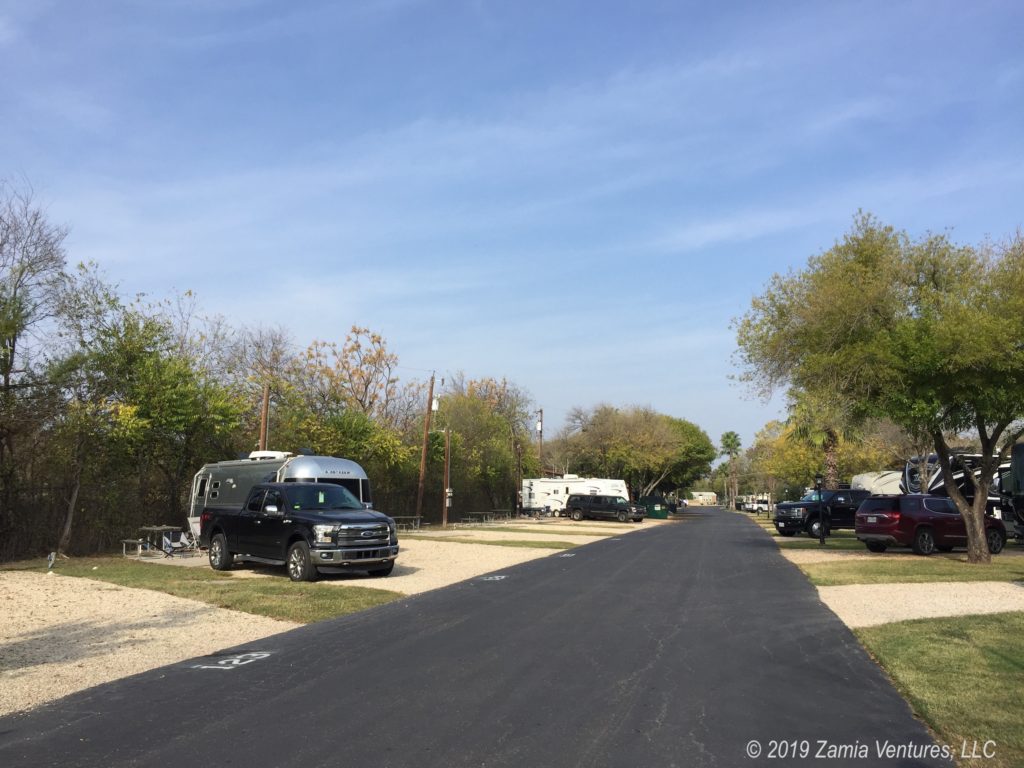
Next: we head down to Padre Island for a long-overdue encounter with the ocean.
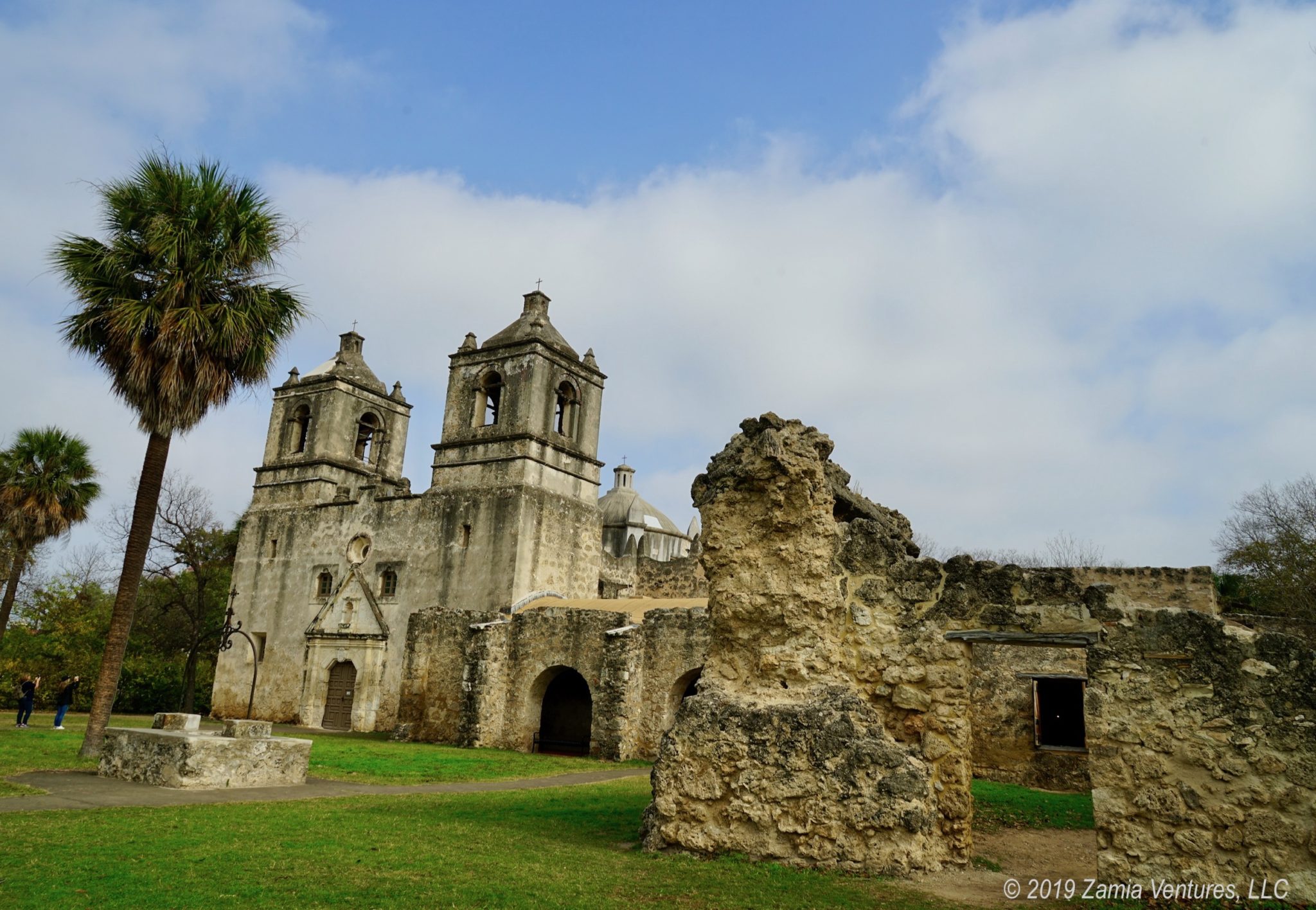
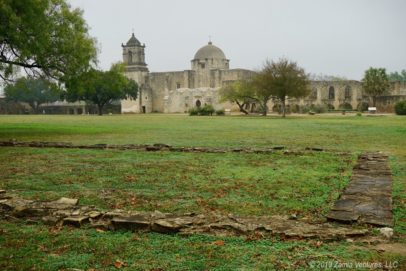
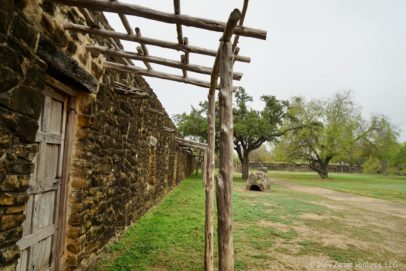
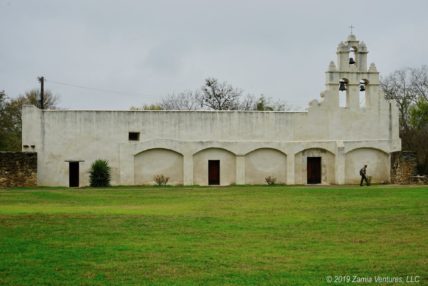
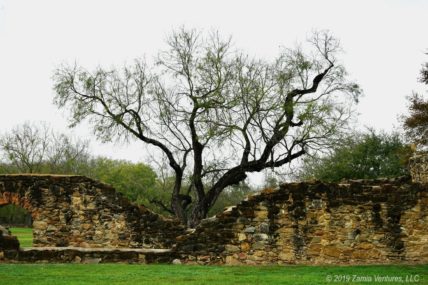
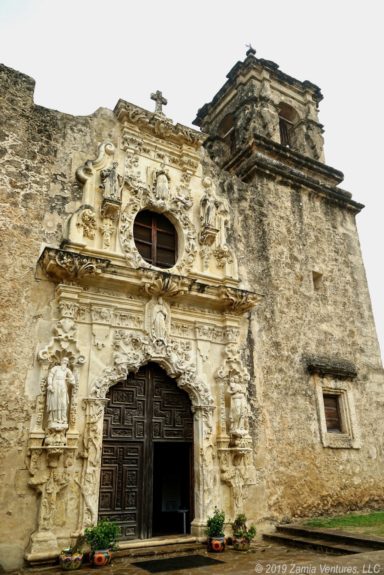
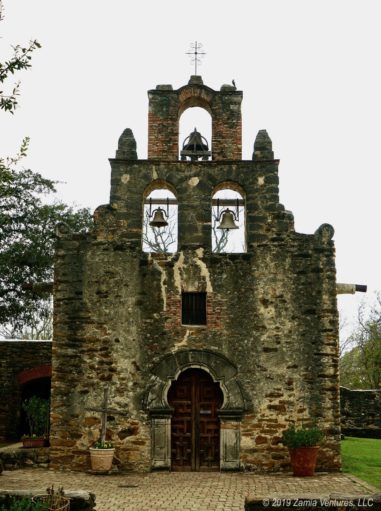
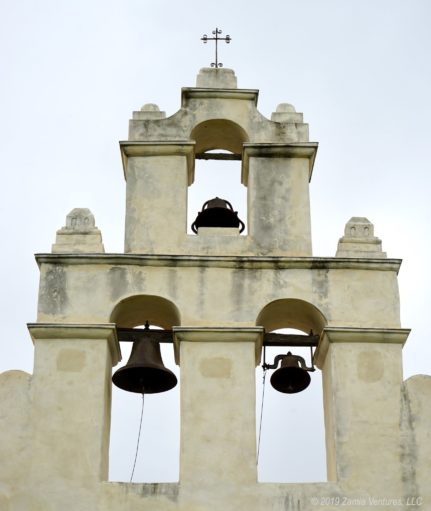
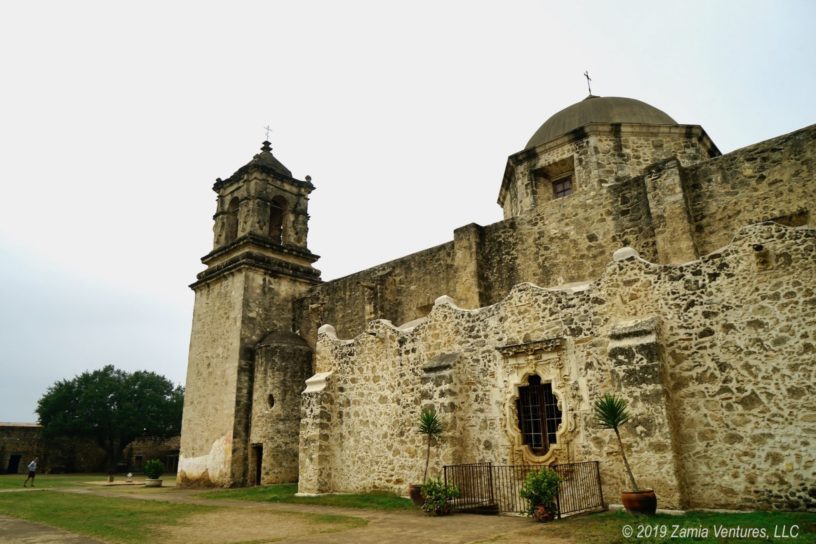
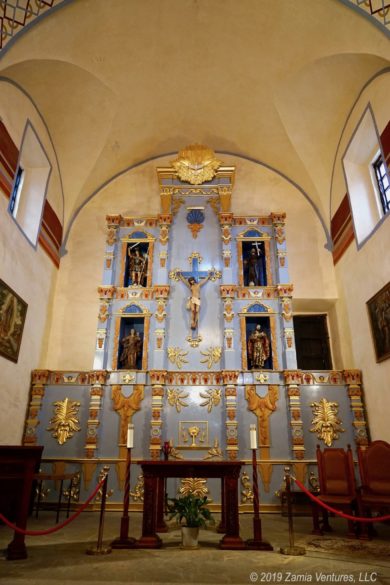
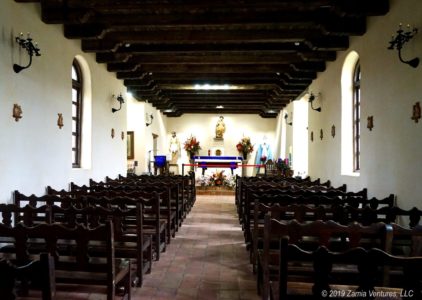
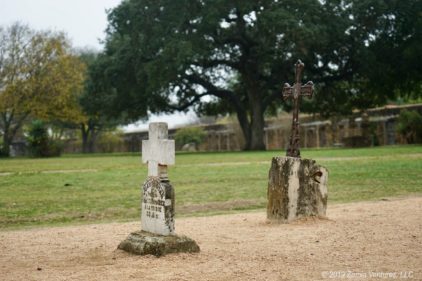
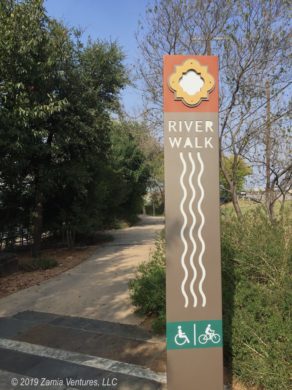
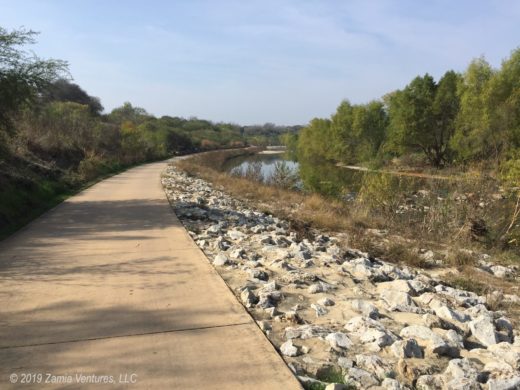


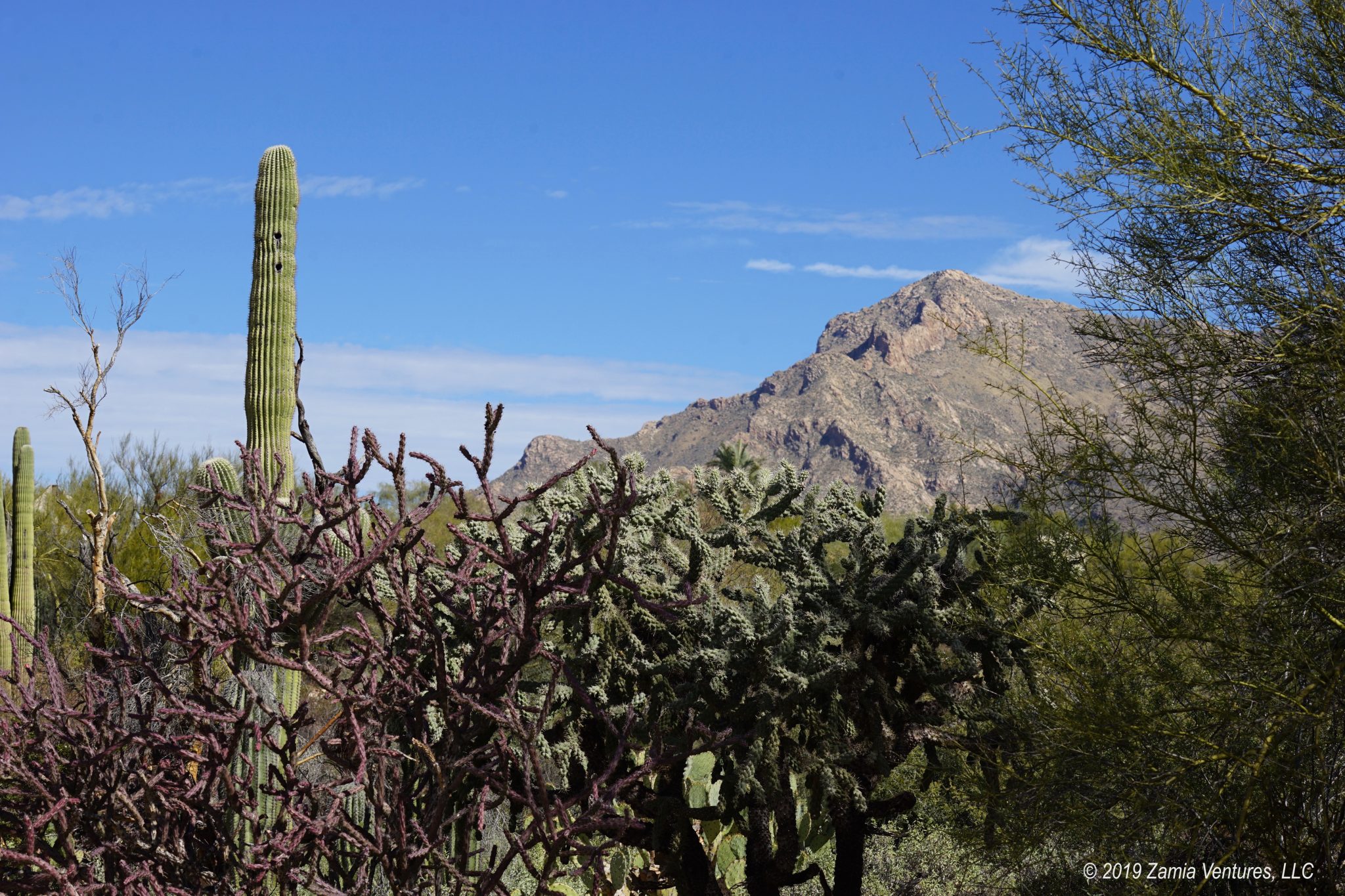
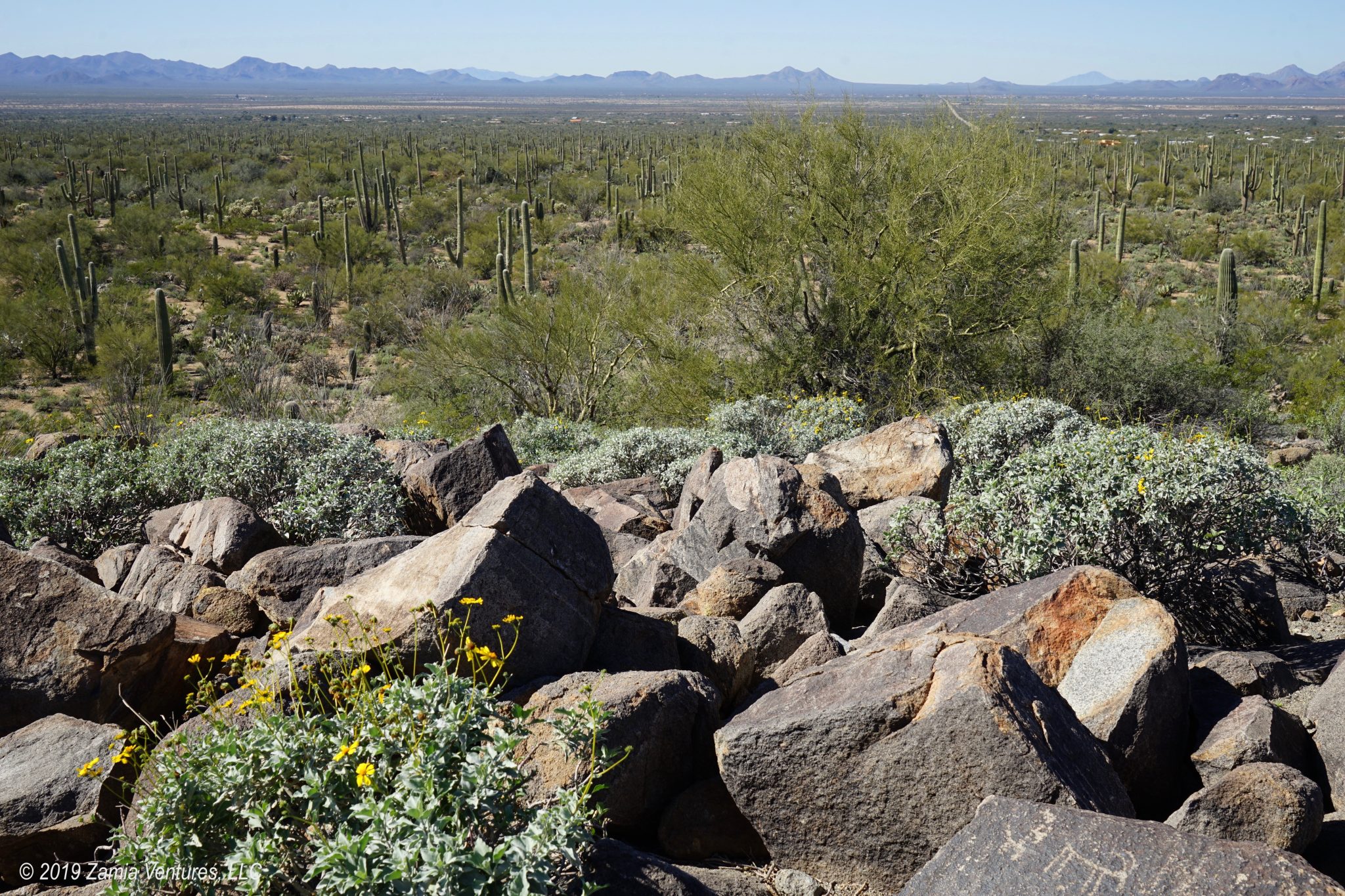
Great blog post title. 🙂 We thoroughly enjoyed our week in San Antonio a couple of winters ago. Biking the Mission Trail was one of the highlights. Like you, I found the relationship between the Spanish and the indigenous peoples fascinating. It seems as though they both gained something from the relationship, instead of the usual annihilation of the natives that more commonly took place.
Good to hear your take on the RV park. We biked through it on our way to the missions and thought it looked like a decent possibility for a future visit to San Antonio, but maybe not.
I found your comment about blogging and “the discipline of distilling down our experiences into 1,500-2,000 word essays” interesting. It’s not easy! I always want to include enough so that I can remember what we’ve done, with the hope that it will be engaging for anyone else who’s reading, AND to provide enough information so that other people might find it helpful. Sometimes people say to me, “Oh, you’re a writer! It’s easy for you!” No. It’s not. Only other bloggers know just how much work it takes. So thanks for taking the time to share your experiences.
I was particularly surprised to learn that there were no agricultural communities in South Texas before the Spanish arrived, even though the San Antonio River provides year-round water. The Spanish completely changed the way of life of the locals, and in many cases for the better (e.g., more regular meals). It was also interesting that the NPS site really embraces BOTH the native people and the Spanish as the forefathers who created the local culture. A fascinating place to visit, for sure.
We thought Traveler’s World was nice enough (bathrooms and laundry were great, and the pool was small but inviting) but at $58/night in the winter it just cost a lot more than we typically pay, while basically being a standard commercial RV park.
Amen to your comment about how much time and effort blogging takes! After blogging for several years now I am even more appreciative of people like you who have been at it for many more years. For me the actual writing process has gotten a little easier over time, but I often struggle with what my “take” on a place is going to be. I want blog posts to be more than just a list of places we visited and accompanying photos, and I find it hard at times to pin down the more subjective side of things (what truly made the museum great? how could it be better? were there really too many other people on the trail or am I just being a curmudgeon? etc.). Luckily I find lots of fodder for blogging in our normal conversations during hikes or during happy hour. That’s also how Ken’s viewpoint filters into the blog, making it a team effort.
We thought about touring the missions when we were near San Antonio last year, but it remains something to do if/when we’re through there again. I love, love, love that the ranger was so knowledgeable and invested. The old mission buildings are beautiful.
I have only been to the Riverwalk once, and that was years (and years) ago when I was in basic training. Cities, as you know, aren’t generally our thing, but I do have a soft spot for trails that run through them. I think I would like to bike it!
Thank you for including ours in the “Blogs We Follow” section! That’s a solid, varied list, and most of those blogs are also the ones we look to for virtual guidance through the real world, as well.
Thank you, too, for sharing your lives with the world. 🙂
I highly recommend the missions for a visit since the NPS materials and presentations are so nuanced and well done. As you can see, it’s one of the few things we actually prioritized in San Antonio. But if you are in Tucson this winter you can also check out Tumacacori — if you haven’t already done so — for a smaller but also thoughtful discussion of missions. Be sure to take a ranger tour!
I think you would like biking the whole River Walk, though in the crowded downtown you might end up walking the bike! We don’t carry bikes with us, and considered renting the ubiquitous B-bikes ($12 for 24 hours of use) but the weather didn’t cooperate. I do think that the River Walk is one of the outstanding aspects of the city and a marvel of good urban planning, even though we only explored a small section.
We’re glad to have you on our blogroll. Even though you and TBG make our hiking efforts seem incredibly lame, I can always count on you guys to sniff out the good trails in the most unlikely places!
Your comments about blogging and your conversation with Laurel are right on. It is definitely time consuming and can feel like a slog at times, but it is an ideal travel hobby for so many reasons. I often find myself thinking about what I’m going to write about as we visit places and it sometimes informs the things we do while we’re in a given location. For me, it provides direction and motivation (“what the hell am I gonna write about this place if we never leave the rig… OK, guess we’ll go that museum…”). Additionally, having this personal travel journal is incredibly valuable. I am shocked by how much we routinely forget, but I guess it shouldn’t be all that surprising. We are always in new places and we are constantly bombarded with information both from our own experiences and those of our friends and other bloggers. Without this journal, everything would be a blur by now. Anyway, rest assured, your blog is being used in the same way you have relied on others. It is truly hard to find blogs where people are consistently moving, consistently checking out interesting places, and consistently writing about it all. There are a handful of sites I turn to when trying to figure out our future travel plans and yours is one of them.
As for San Antonio, we, too, loved exploring the missions. I wish I had explored the Mission Reach section. We knew the Riverwalk extended out of the city center, but never checked it out. I am sure we would have enjoyed it much more than the overly built up downtown section.
A conversation with Ken about our planning for San Antonio inspired the lead in to this post. He correctly pointed out how lucky it was we knew there was very little here to interest us, and that was pretty much entirely due to travel blogs we follow. Our stay was unusually short for us, but was the right amount of time for what we wanted to see. It would be so annoying to book an entire (expensive) week in a spot like this only to discover that we are ready to leave after two days.
As you know, I have followed your blog from the very beginning and yours is a great resource for us. Your posts always give us a vivid picture of what to expect in a given location, which is incredibly helpful. That may explain why we end up following you to many places…. we are not just delayed stalkers. 🙂